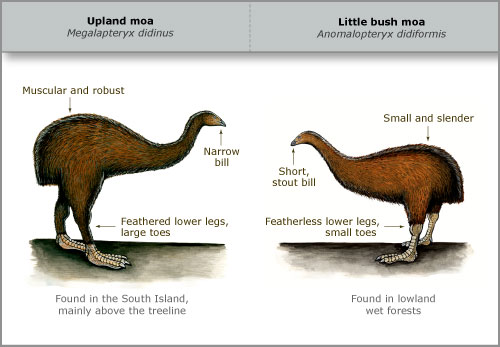
A single ancestor of all 10 moa species is thought to have lived in New Zealand around 30 million years ago. Moa species differed greatly in their size, form and in the habitats in which they lived. The upland moa (Megalapteryx didinus) and the little bush moa (Anomalopteryx didiformis) both grew to the same height and weight (around 1.3 metres and 25–30 kilograms) but they had different features. The upland moa, unlike other moa, had feathers growing down to its ankles – probably an adaptation to the colder mountain environment. It was also more robust and muscular than the little bush moa, and its toes were larger and its bill narrower. These were all probably adaptations to a colder, mountain habitat and a different diet.
Using this item
Te Ara - The Encyclopedia of New Zealand
Artwork by Bruce Mahalski
This item has been provided for private study purposes (such as school projects, family and local history research) and any published reproduction (print or electronic) may infringe copyright law. It is the responsibility of the user of any material to obtain clearance from the copyright holder.





Add new comment